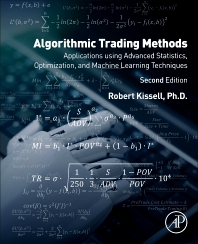Books in Financial institutions and services
Books in Financial institutions and services

Contemporary Financial Intermediation
- 5th Edition
- Stuart I. Greenbaum + 2 more
- English

Commercial Banking
- 1st Edition
- Allen N. Berger + 2 more
- English

Handbook of Blockchain, Digital Finance, and Inclusion, Volume 3
- 1st Edition
- David Lee Kuo Chuen + 1 more
- English

Handbook of Digital Currency
- 2nd Edition
- David Lee Kuo Chuen
- English

The Economic and Financial Impacts of the COVID-19 Crisis Around the World
- 1st Edition
- Allen N. Berger + 2 more
- English

Handbook of the Economics of Corporate Finance
- 1st Edition
- English

International Money and Finance
- 10th Edition
- Michael Melvin + 1 more
- English

Financial Trading and Investing
- 3rd Edition
- John L. Teall
- English

Algorithmic Trading Methods
- 2nd Edition
- Robert Kissell
- English

TARP and other Bank Bailouts and Bail-Ins around the World
- 1st Edition
- Allen N. Berger + 1 more
- English